It would be fair to say that we do not need to look too far to understand that the story of Pakistan has been one of self-inflicted double mindedness that has swung from one extreme ideology to the next. Our leadership has looked externally for solutions resulting in a nation that lags in all aspects of our life – from science to economics to governance. This is understandable because a nation that follows others can only always play catch up. Adding further schizophrenic misery to our situation is the fact that a majority of the populace looks at these foreign systems for socio-economic improvement with suspicion as just another way to bring about subjugation and subservience to goals that do not align with our own.
As the world is gripped by a calamitous lockdown resulting in the shuttering of businesses and the quarantining of a hyper-industrious human race back into their dwellings, a forced introspection has been imposed on the collective minds of a generation. As busy routines have come to a standstill, many of us have had a chance to understand and reassess our life trajectories. Similarly, it is a chance for governments to consider whether the efforts they had been making to improve the lives of the citizenry they serve is actually the most optimum path of action.
It is therefore the humble attempt through this article to understand some of our current needs and how we may find holistic indigenous solutions to these problems. Through this we hope to discover our latent talents and point ourselves towards organically generated goals that we want to achieve through methods that are intrinsic to ourselves. In turn, creating a self-guiding vision that can be executed without complete reliance on a historically self-centered governmental leadership. We have chosen to look at tourism and to delve within it to illustrate a local perspective of importance.
Why tourism?
If we are to speak in Pakistan Tehreek-e-Insaf (PTI) vernacular – then we can safely say that the current government is attempting to play on the ‘front foot’, when it comes to bringing tourism to the country. Transformative benefits of bringing tourism to Pakistan were promised in the PTI election manifesto, promoted on social media after the party came into power and it seems like that the government is standing by this as the way to change the destiny of Pakistan post the onset of the Covid-19 crisis. Is tourism really the next big thing and a lucrative enough industry?
“PTI will turnaround the tourism industry to improve Pakistan’s international image and increase its direct contribution to GDP. Tourism in Pakistan has undoubtedly immense potential given our diverse culture, heritage and natural endowment. However, for now it is a missed opportunity owing to multiple reasons including the war-on-terror, minimal marketing, poor public and private sector infrastructure and services.” – PTI Manifesto 2018
According to the United Nations World Tourism Organisation (UNWTO) travel and tourism has grown over the last two decades to become one of the leading economic sectors in the world, driving socio-economic development and growth across the globe. Data shows that tourism has dramatically developed from a fledgling industry in the 1950s attracting a measly 25 million arrivals to quickly exploding to a 1 billion person arrival industry by 2012 and which, prior to Covid-19, was projected to almost double by the 2030s.
Therefore, it is no surprise that developing economies are increasingly pursuing the enhancement of this sector within their countries with the hope of attracting investments and employment benefits that it brings.
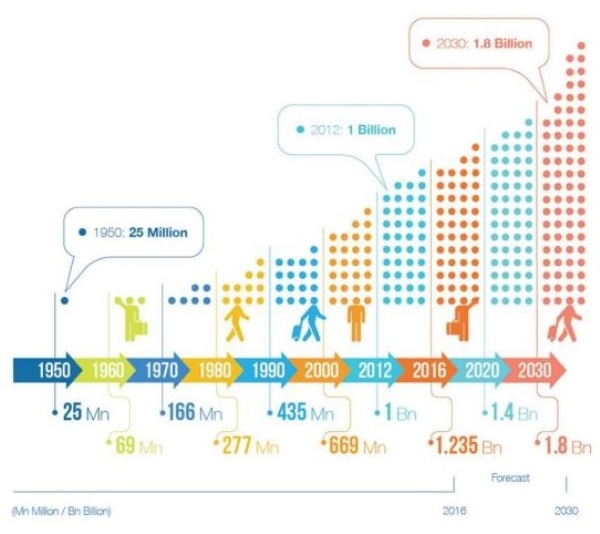 Figure 1: International Tourist Arrivals (The Travel Foundation)
Figure 1: International Tourist Arrivals (The Travel Foundation)The Pakistan Tourism and Development Corporation’s (PTDC) recently added a slick overhauled website which extols the touristic assets of the Pakistan from north to south, acknowledging the potential of the country to challenge the regional and global competition on a diverse range of products.
“Pakistan is endowed with a rich and varied flora and fauna. High Himalayas, Karakoram and the Hindukush ranges with their alpine meadows and permanent snow line, coniferous forests down the sub-mountain scrub, the vast Indus plain merging into the great desert, the coast line and wetlands, all offer a remarkably rich variety of vegetation and associated wildlife including avifauna, both endemic and migratory.” – PTDC
With the PTI government showing a consistent willingness to tap into this potential, there is a need to understand what this proposal and initiative really means for the country in the short and long term and why there is an urgent need to guide this new development to protect Pakistan’s rich natural, historical and cultural assets while learning from mistakes that other countries have made.
Opportunities
In 2020 the World Travel and Tourism Council (WTTC) reported that the travel and tourism industry in 2019 continued at a growth rate of 3.5%, exceeding the global economy growth (2.5%) for nine consecutive years. Tourism is also the third largest category for international exports after chemicals and fuels, worth USD 1.6 billion. The sector has created one out of four jobs in the last five years and contributed almost USD 8.9TN (10.4%) to the global economy.
 Figure 2: Travel and Tourism Economic Impact 2020 (WTTC)
Figure 2: Travel and Tourism Economic Impact 2020 (WTTC)In 2018 as per data released by the UNWTO, Asia and the Pacific showed the highest growth in tourism arrivals with a rate of 7% which represents total tourism receipts of a whopping USD 435 billion, surpassing all other regions in growth rate and second only to Europe in tourism receipts.
 Figure 3: International Tourist Arrivals by Region, 2018 (UNWTO)
Figure 3: International Tourist Arrivals by Region, 2018 (UNWTO)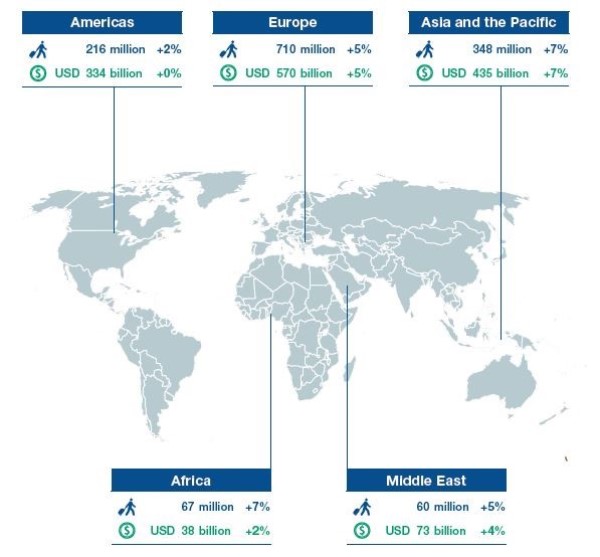 Figure 4: International Tourist Arrivals and Tourist Receipts, 2018 (UNWTO)
Figure 4: International Tourist Arrivals and Tourist Receipts, 2018 (UNWTO)At first glance, Pakistan with its current share of only 0.1% of international tourist receipts with a value of USD 352 million (2017) would seem like a disappointing proposition, but when the complex dynamics of the tourism industry are studied, this is revealed to be only a part of the bigger picture. Upon breaking down the global travel and tourism spending, international tourism spending accounts for only 28.7% of the total, whereas domestic spending is actually the majority, contributing 71.3%. Where international tourism represents visitors travelling to other countries, domestic tourism is defined as tourists travelling within their own country. This is an ideal starting point for Pakistan due to its large population and widening middle class that aspires to travel but does not have easy access to international destinations. The Pakistani population is estimated to be 212 million with a high growth rate of 2.1% and a growing middle class that is estimated to be around 38% of the population.
Travelling is an aspiration of many Pakistanis that fall within this demographic of middle class travellers, but due to difficult to obtain travel permits and visas from many international destinations, along with the high costs of travelling abroad, the endeavour is found to be restrictive. This creates an opportunity for the tourism sector in Pakistan to build and expand on domestic tourism which could pay high dividends and satiate a highly desirable consumer sector demand locally.
When compared regionally, Pakistan currently lags behind its regional counterparts with an overall global rank of 121 and a shortfall in its tourism metrics which include enabling environment, policy and enabling conditions, infrastructure and cultural resources. If viewed from a glass half full perspective, Pakistan can be heartened by India and Sri Lanka’s high international standings, both countries with similar tourism products; confirming that the product Pakistan intends to sell is in good demand with tourists internationally. Additionally, in order for the tourism industry to improve the government will have to improve many of the metrics that will inadvertently better the lives of Pakistanis. This route to development might not be how the Pakistanis would have liked their standards of living to have improved but considering the crisis that the country has had to wade through in the recent past, it is highly likely they will happily accept what improvements comes their way.
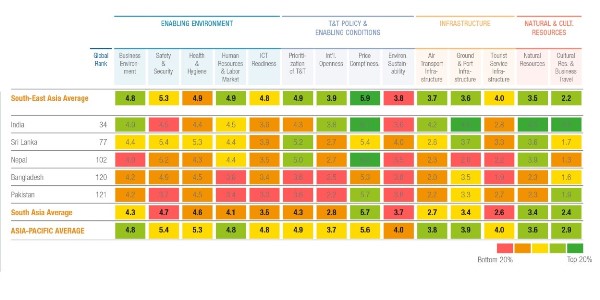 Figure 5: Regional Tourism Comparison, 2019 (World Economic Forum)
Figure 5: Regional Tourism Comparison, 2019 (World Economic Forum)The ability of travel and tourism to create jobs and indirectly create positive impacts on several other sectors can also not be underestimated. With a large workforce available and a culture that is known for its hospitality, Pakistan ticks all the boxes required to create a self-sustaining commercial industry.
Risks
However, there are several potential risks of unmonitored tourism development that need to be considered for realising the full potential of this rewarding yet complex industry. Recent research by the Travel Foundation indicates that countries that are most vulnerable to tourism development are those that have a fast widening middle class, are classified as high risk due to climate change, have a chance to become overly dependent on tourism and have weak government management structures in place.
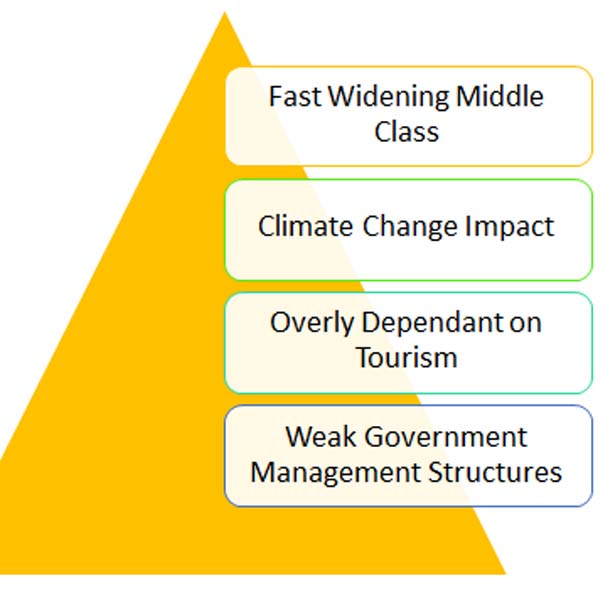 Figure 6: Countries Most at Vulnerable to Increased Tourism (The Travel Foundation)
Figure 6: Countries Most at Vulnerable to Increased Tourism (The Travel Foundation)Most of these characteristics apply to Pakistan, therefore there is a need to protect against the negative effects of tourism by implementing mitigation strategies before the development takes effect. Correcting damages to the local touristic assets after the fact is much more expensive than foreseeing and implementing the correct strategies early at the initiation of a tourism development project.
After many countries enticed by the riches promised by tourism have suffered negatively, recent studies of what went wrong have identified an ‘invisible burden’ due to tourism, this is defined as the unaccounted costs that a destination must pay to accommodate tourism. These can include degradation of the environment, disruption of the local lifestyle and strain on existing infrastructure. Locally we can see Murree as a small scale sample of the damages that tourism can cause to a location and its inhabitants. Over the years a large influx of tourists have strained its capacity to manage solid waste and its aging infrastructure which was not built to support such a large number of users is found to be constantly under extreme strain.
The local environment if not protected against construction activities, solid waste and sewage generation can lead to heavy or permanent loss of local biodiversity and ecosystem services. Most developing economies with weak existing infrastructure are highly susceptible to strain on their infrastructure including energy, solid waste disposal, and water and sewage networks. Additionally, the influx of visitors can also cause increases in local rents, congestion and negative impacts on residents’ privacy.
Typically, even when tourism management is applied in developing countries, it accounts for only some of the operational externalities or the costs incurred from increased tourism. These are usually limited to managing and improving the existing airports and transport networks that are needed to accommodate the incoming tourists. What often gets missed and needs to be incorporated into any new tourism management plans by the government of Pakistan (in addition to the above) are the costs of increased Green House Gas (GHG) emissions, maintenance of natural ecosystems, restoration of ecosystem services, energy costs, water sources, waste water management and socio-cultural restoration and maintenance that are incurred due to the added foot fall to areas where tourism is proposed to be increased, which in many cases are deemed to be highly susceptible ecological systems.
It needs to be understood that these socio-cultural, historical and natural assets are the actual product that the government intends to sell, if damaged there will be no recurring businesses – let alone the crime of depriving the deliverance of this inheritance to future generations of Pakistanis.
Realising potential and managing risks
To ensure that the tourism in Pakistan can be developed in a way that can extract the maximum benefit and avoid the risks; a systematic approach that assesses the ground realities, plans and accordingly executes strategies must be adopted.
The United Nations Environmental Programme (UNEP) and the World Trade Organisation (WTO) advises that the following strategy be adopted when considering a destination development plan with sustainability in mind:
- Taking a holistic view
- Pursuing multi-stakeholder engagement
- Planning for the long term
- Addressing global and local impacts
- Promoting sustainable consumption
- Equating sustainability and quality
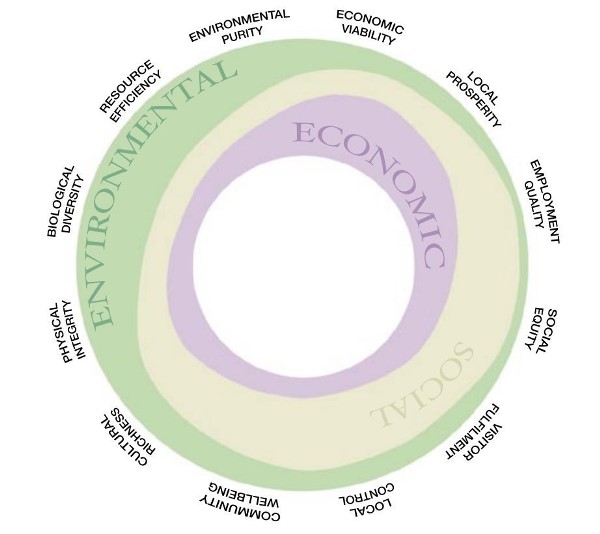 Figure7: Pillars Sustainability and Tourism UNEP (UNEP/WTO, 2005)
Figure7: Pillars Sustainability and Tourism UNEP (UNEP/WTO, 2005)The United Nations Sustainability Development Goals (UNSDG) also addresses the tourism industry on a large spectrum of issues that are not just another international commitment that the Pakistan government has made but is actually able to address many of the issues that country is currently facing from poverty, inequality to hunger and gender equality.
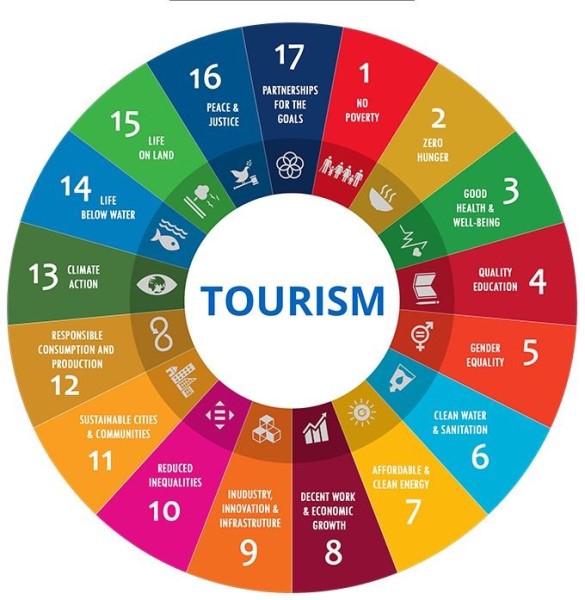 Figure 8: United Nations Sustainability Development Goals (UNSDG)
Figure 8: United Nations Sustainability Development Goals (UNSDG)The process that needs to be followed is creating Pakistan specific sustainability guidelines by understanding and focusing on the areas of indigenous concern from sources such as the United Nations Sustainable Development Goals (SDGs) and the United Nations Environment Programme (UNEP). This is followed by adopting and creating the best available practices and technology that can mitigate the risks and negative costs of tourism. In creating this pathway of compliance, local laws and regulations, socio-cultural aspects, climatic conditions and availability of resources are some of the aspects that need to be considered. The final model adopted will need to find a fine balance between implementation of regulations and promotion of business to avoid bottlenecks in the approval and implementation of development projects but at the same time not foregoing the needs to protect local assets.
The impact of Covid-19
At the time of writing this article, the world is still grappling with the extent of the impact that Covid-19 has inflicted on the tourism industry but what we do know is that borders have been closed, flights cancelled and the whole tourism value chain has been greatly disrupted. The national carrier, Pakistan International Airline (PIA) is reportedly one of the most at risk airlines to go bankrupt and the Civil Aviation Authority had estimated losses of PKR 25 billion (in just two weeks of lockdown). Hotels, resorts and Small Medium Enterprises (SMEs) across the country are shuttered and under severe stress, not able to pay employees and even in danger of going bankrupt. At the same time the number of Covid-19 cases have passed 100,000 with more than 2000 deaths and hopitals are running out of beds to care for incoming patients. What is even more worrisome is the fact that cases according to the prime minister are yet to peak in August 2020.
It is estimated by the UNWTO that in 2020 global tourist arrivals could decline by 20-30%, which could be a huge blow to the fledgling tourism industry of Pakistan that was proposed to prop up the GDP. It is expected that due to Covid-19, Pakistan’s GDP could contract up to 13.6% by FY20 and result in almost 11.5 million people stranded with temporary job losses and in a high impact scenario almost 50% of the population could slip into poverty in the long run. Having considered the depth of the impact on economies and businesses, international organisations such as the UNWTO and WHO are clear in their stance and have declared that the wellbeing of people must and should take precedence when reopening tourism.
“Our ‘Crisis Management Task Force’ is working on the SOPs for opening the tourism industry so that we don’t have to wait when the Covid-19 is over. We are trying to put a proposal in the next budget that all sort of equipment that used in hotels kitchen and all hotels should be duty free. Under the leadership of Prime Minister Imran Khan, our goal is to take the GDP contribution of tourism to the country from 2.9 per cent to 7-8 per cent.” – Sayed Zulfikar Abbas Bukhari
The Covid-19 crisis has created a need to quickly provide solutions to support a struggling economy and jumping into development projects will now be more enticing than ever. The government will need to be cognisant of these forces and develop creative solutions from its in-house army of officials – the steps taken at this time will be a part of a performance scoresheet that will be assessed for many generations to come.
Conclusion
The Ministry of Climate Change (MoCC) along with the PTDC have a critical role and must work in tandem to provide leadership for the sustainable development of the tourism sector. The MoCC has shown positive gains under the current government with notable projects such as the 10 Billion Tree Tsunami, plastic ban, Clean Green Initiative, Electric Vehicle policy and consideration to launch a green building standards to counter the impact of tourism related construction.
As an example, tourism master planning, modeling and creation of by-laws where each new development is certified and approved are some of the ways in which other countries have attempted to avoid the damages that come from tourism. In the case of Pakistan, where funding for development is limited and newer technology to manage and maintain the tourism assets might not be readily available, a strategy that utilises its biggest assets - local bodies and a large workforce must be placed at the core of any plan is the only way to success. Providing training and increasing awareness for local populations, clearly communicating on how they can gain and contribute towards a sustainable tourism plan can impart long term benefits from the grassroots of society. By creating a shared economy where the proceeds from tourism benefit all strata of society through employment and profit to local businesses will be key to a tourism plan that can be long lasting and self-expanding.
In the end, the direction the Government of Pakistan takes to implement its tourism strategy can have an immediate, direct and at worst an unrehabilitatable impact on our natural, cultural and social surroundings. As for the citizenry of Pakistan, it is of paramount importance to engage with the government at all stages in the development of this strategy and take ownership of a consensus-built program after it has been implemented.

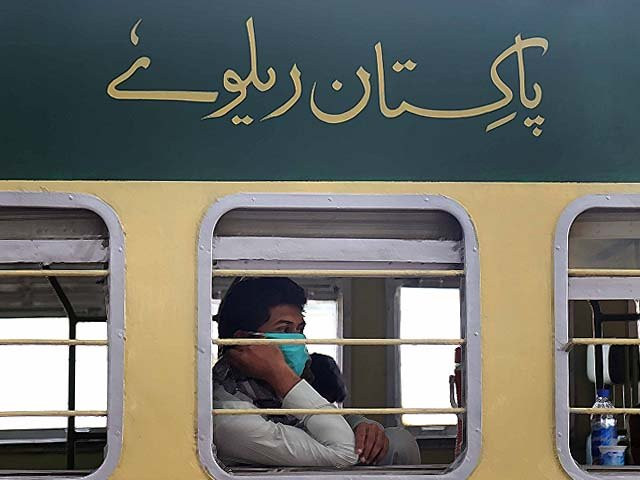

COMMENTS
Comments are moderated and generally will be posted if they are on-topic and not abusive.
For more information, please see our Comments FAQ